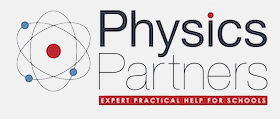A thought-piece from Physics Partners founder and trustee, Tommy Cookson, in response to the recent Curriculum Review:
The panel of experts set up by the government to review the secondary school curriculum has published its report. It is, rightly, disturbed that that only one in ten schools teaches all three sciences as separate subjects to GCSE and recommends that all schools should do so.
The exam is called Triple Science. The alternative, Combined Science, is less challenging and counts as two GCSEs. Candidates for this exam are almost four times less likely to take science A-levels, particularly Physics. In consequence, children in these schools, typically in less affluent areas, have a lower chance of accessing highly-paid scientific jobs and so inequality of opportunity is reinforced.
Deprived areas, such as the North East or West Midlands are hard hit. Hardest hit, however, is the UK economy which needs engineers, doctors, software developers and teachers of Physics.
The government panel’s recommendation is laudable, but its achievement is currently impossible. There is an acute shortage of qualified physics teachers and, for many years, the government has failed to recruit more than a fraction of those needed. In consequence, some 60% of Physics GCSE lessons are now taken by teachers who have not studied a Physics-related subject beyond the age of 18.
An experienced secondary school physics teacher told me recently “Biologists are excellent teachers. The problem is, they don’t know much Physics.”
And why should they? There are many excellent teachers of English but even with the current shortage of modern language teachers, few are required to teach French.
Yet that has, for many years, been the plight of biologists, chemists and even directors of Physical Education. They find themselves required to teach Physics because there are no qualified physics teachers in their schools.
Even specialist physics teachers find the subject tricky to get across to their pupils: it cannot be seen, heard or smelled except in a crisis when it burns. There are various ways of explaining what occurs in an electrical circuit but none that is foolproof. “Electricity?” says a head of science at one of our top schools. “It’s a mystery.”
Considering the task in front of them, biology and chemistry teachers do well. But it is a rare pupil who cannot sense the teacher who has mugged up the topic the night before or the one who says “Any questions?” and moves on before anyone has a chance to ask one for fear of its flooring them.
The shortage of specialists is reflected in UK numbers taking A-level Physics (45,000), well below those taking Chemistry (64,000) and Biology (71,000). Physics attracts fewer girls who comprise a mere 24% of the A-level entry, although girls who do take the subject do as well or better than boys.
The news from universities is even worse. Research by the Institute of Physics has revealed that a quarter of university physics departments risk closure in the next two years, as the 20,000 UK physics undergraduates cannot support them.
For those who do graduate, teaching posts are not attractive. The pay is uncompetitive and the workload heavy. Half of those who do join have left teaching after five years.
There have been valuable attempts to restore the situation. The Institute of Physics did excellent work in schools for many years but has now reduced direct assistance. STEM Learning, to whom the task of helping school physics departments was transferred, has now had its government grant withdrawn.
The Institute of Physics has called the situation a “perfect storm”. But there are glimmers of light. The Ogden Trust continues to provide support, especially in primary schools where enthusiasm and curiosity take root. Working with Physics Partners, which supports non-specialist physics teachers in 450 secondary schools, I have been able to see how biologists and chemists are stepping into the breach.
Schools are coming together to make hubs for joint professional development sessions in A-level and GCSE. The main task is to instill confidence. Physics Partners provides specialist coaches from independent and state schools to discuss topics and ways of teaching them. And the teachers swap their own ideas, most of them meeting each other for the first time, even though their schools are only a few miles apart. These sessions happen twice a term, creating a peer-support network of local teachers and technicians. One of the most successful sessions I have observed was conducted by a biology teacher who began “This is the way I teach electricity. You tell me where I go wrong.”
Physics gains from doing practical work. But many non-specialist teachers are nervous of it, lacking equipment and technical support. If there is a shortage of specialist teachers, there is also a serious shortage of technicians. Underpaid and underappreciated, technicians are vital to the business of physics teaching. Physics Partners is devoting more and more time to sessions for technicians on the theory and practice of physics teaching, so that they understand what their equipment is for, how it can be maintained and whether it is fit for purpose.
The panel of experts have asked an important question and the non-specialist teachers in schools are doing their best to provide the answers. As things stand, there is unlikely to be a sudden influx of specialist physics teachers into our schools, so we must do our best with what we have. And with our current biologists, chemists and technicians willing to get together, learn, discuss, enthuse and give it a go, we could do an awful lot worse.

